Thread Lift 101: Everything You Need To Know
Thread lift is the new Botox!
On Aug 12, 2023 – 12 minutes read
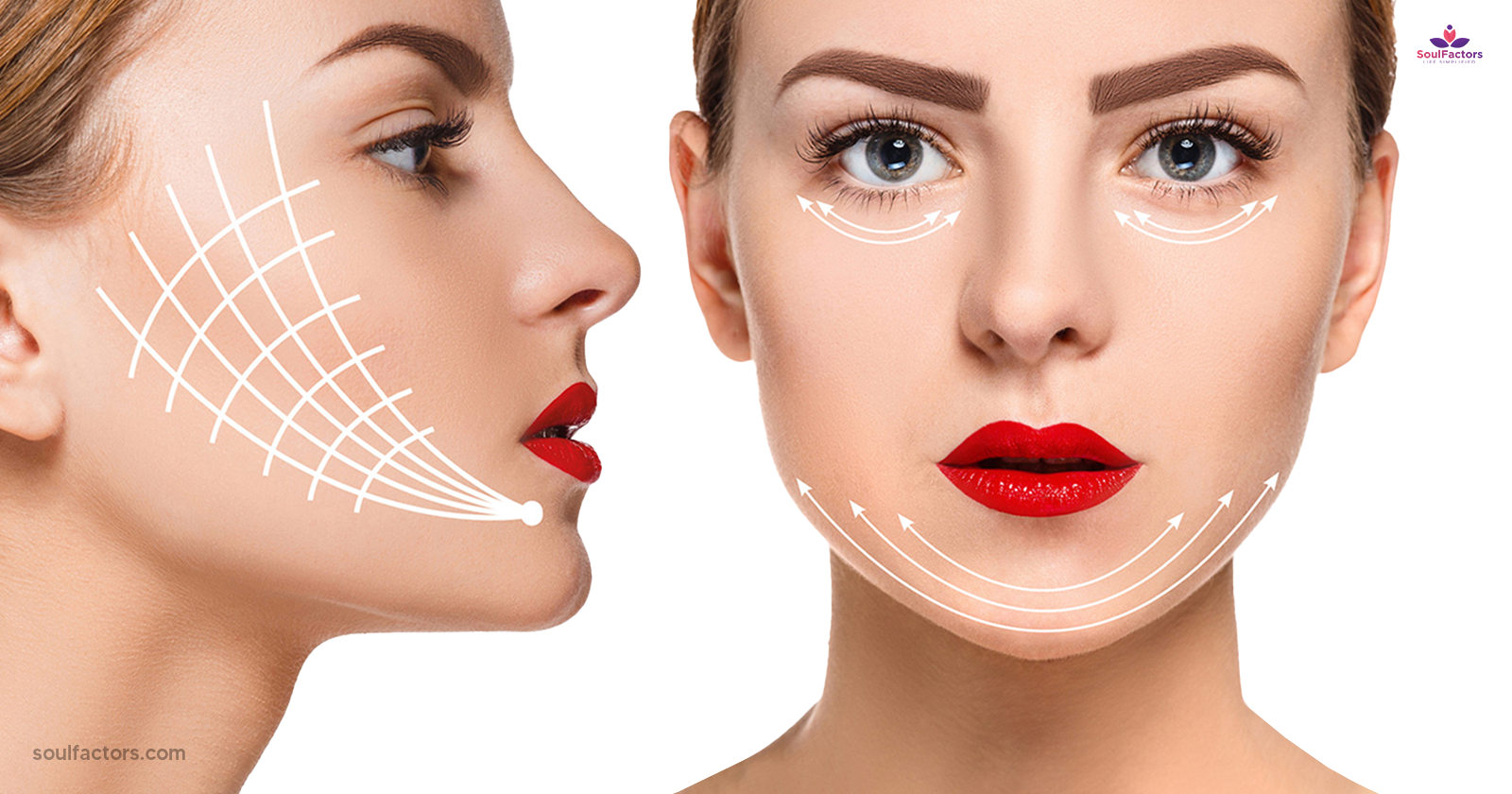
Ever thought about how awesome it would be to turn back the clock without going under the knife? You’re not the only one! In recent years, the world of cosmetic treatments has witnessed remarkable advancements, and one such innovation that’s been making waves is the Thread Lift. If the idea of getting that youthful glow back without the hassle of long recovery times tickles your fancy, then you’re in the perfect spot.
What Is A Thread Lift?
A Thread Lift, also called “lunchtime facelift,” is a non-surgical cosmetic procedure designed to lift and tighten sagging skin. Unlike traditional surgical facelifts that require incisions and significant downtime, a Thread Lift involves medical-grade threads to gently lift the skin, making you look all refreshed and youthful.
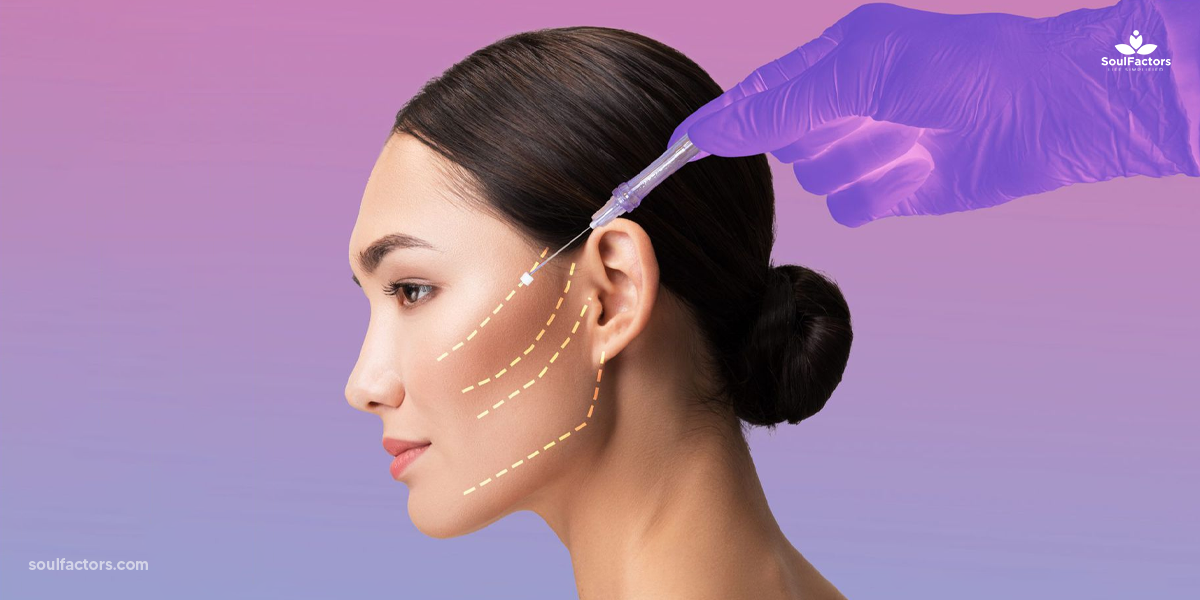
The primary goal of a thread lift is to stimulate collagen production. Collagen is a crucial protein responsible for maintaining skin’s elasticity and firmness. (1) As we age, our collagen production takes a dip, and that’s when the sagging and wrinkles swoop in.
By introducing threads beneath the skin, the body responds by producing more collagen.
The result? Your skin texture gets a boost, and that youthful vibe returns in full swing.
Different Types of Thread Lifts
There are various types of thread lifts, tailored to meet specific preferences and needs. Let’s take a closer look at three primary types of thread lifts.
1. PDO Thread Lift
The PDO (polydioxanone) thread lift has garnered significant attention for its impressive results lately. PDO threads are absorbable sutures that are gently inserted beneath the skin. Over time, these sutures dissolve, leaving behind a collagen-rich foundation that supports lifted skin. If you’re looking for a way to rejuvenate your face, neck, or body, the PDO thread lift might be just what you need. It’s a popular choice for people who want a comprehensive approach to retain their youthful appearance.
2. PLA Thread Lifts
They are similar to PDO threads. PLA threads take about 12 months to be absorbed, while PDO threads take only about 6 months. However, PLA threads provide a more dramatic lift than PDO threads.
3. PCA Threads
They are the newest type of thread lift. They are made from polycaprolactone (2), a synthetic material that is also biodegradable and safe for human use. PCA threads last even longer than PLA threads, taking about 12 to 15 months to be absorbed. PCA threads induce the production of collagen and hyaluronic acid and provide a more dramatic lift than PDO or PLA threads.
In addition to these three main types of thread lifts, several other types of threads are less common.
1. Silhouette Soft Threads
Silhouette InstaLift is another type of thread lift that uses special cones to lift skin that’s starting to sag. These cones not only give a quick lift but also help your body make more collagen over time. It’s good at lifting the midface and jawline, which gives the face a more youthful contour.
2. Cog Thread Lift
Cog threads are barbed threads that give your skin an extra lift and tighten. These barbs grab onto your skin and give it a stronger lift. Cog threads are commonly used for treating the lower face, neck, and jowls.
3. Screw Thread Lift
Screw threads have intertwined threads around the needle. They are most commonly used for eyebrows and cheeks.
PDO Thread Lift: Meaning, Procedure
Out of all the thread lift choices, the PDO thread lift is the most sought-after choice by both consumers and doctors. PDO threads are made from a material that can be absorbed by your body, and doctors have been using that thread for stitches for a long time. Two things happen when they put these threads under your skin in certain places.
First, the threads help fix sagging skin and make you look younger. Second, they also help your skin make more collagen.
Getting a PDO thread lift happens in a few steps. First, you talk to a qualified expert to see if it’s right for you. When it’s time for the procedure, they would numb the area so you’re comfy. Then, they gently put the PDO threads under your skin using a tiny needle. The whole procedure takes about an hour. You won’t need much time to recover either. You can get back to your routine immediately, hence the name “lunchtime lift”.
How Does A Thread Lift Work?
If you’ve ever wondered about the wizardry behind a thread lift, prepare to have your curiosity satisfied.
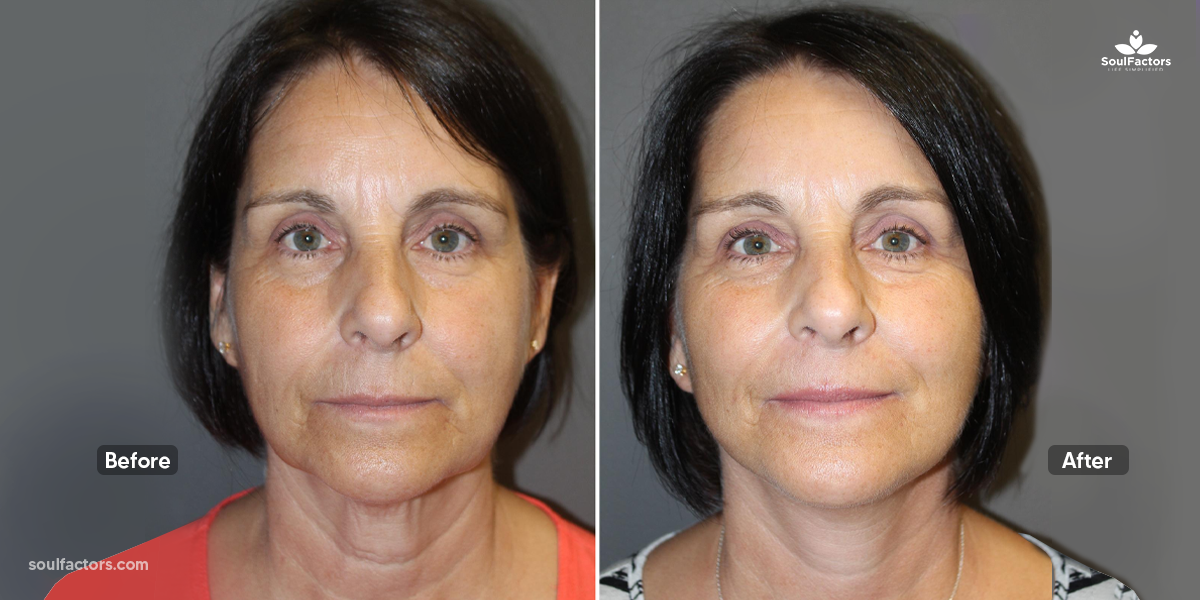
Thread Lift before and after image
For the first step, your doctor would start by marking the areas where you want the lift. Then, they insert special threads beneath your skin. The threads have little barbs, cones, or cogs that grip onto your skin tissue. Once these threads are gently pulled, they lift and reposition your skin. This is what gives you the instant lift and makes your skin look tighter.
The presence of these threads under your skin stimulates your skin to produce more collagen. Collagen is a protein that keeps maintains the tightness of the skin.
Over the next several months, the threads gradually dissolve. However, the new collagen structure they’ve encouraged sticks around. This means that even after the threads are gone, your skin keeps the lifted and rejuvenated appearance.
Thread lift Procedure Step-By-Step
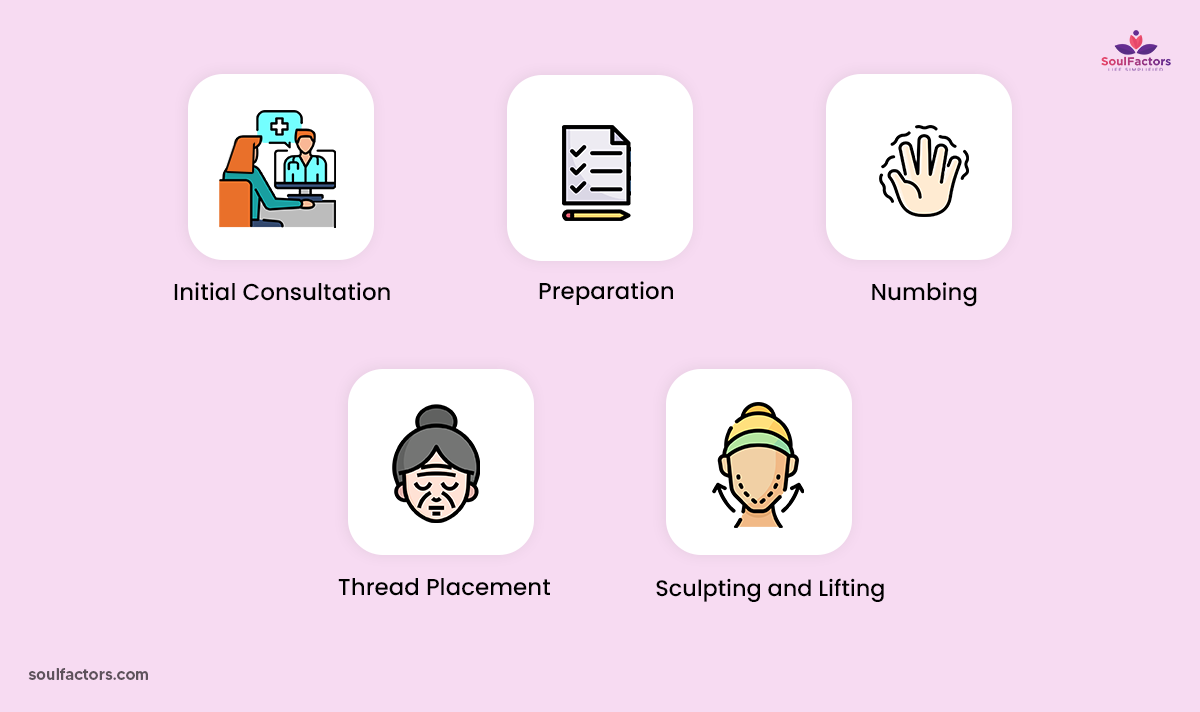
Initial Consultation
Begin with a thorough discussion with your doctor. You’ll talk about your goals, concerns, and what you hope to achieve with the thread lift.
Preparation
Before the procedure, your doctor may provide you with instructions to follow, such as avoiding certain medications that can thin your blood and increase the risk of bruising. Your doctor will also identify the areas of sagging skin and mark out where each thread will be placed.
Numbing
Your doctor will apply a numbing cream or use local anesthesia to ensure you’re comfortable and don’t feel any pain during the procedure.
Thread Placement
Then comes the most important part. Fine threads are gently inserted beneath your skin using a thin needle or a small tube called a cannula.
Sculpting And Lifting
Once the threads are in place, the doctor gently manipulates them to lift and reposition the targeted skin. This step requires skill and precision to achieve the desired results. The threads act as a scaffold, supporting the lifted appearance.
The entire process takes about 30-40 minutes to complete and you can return to your work or your daily activities right away.
Targeted Areas For A Thread Lift
One of the most impressive features of a thread lift is its versatility and customization. A qualified practitioner can personalize the treatment to meet your specific requirements. Let’s shine a spotlight on the areas that can benefit from thread lifts.
Brow And Forehead
Starting at the top, a thread lift can address those telltale signs of aging that can weigh down your brow and forehead. As the skin loses its elasticity, the brows can droop, creating a tired or sad appearance. By strategically placing threads, a thread lift can gently lift the brows and forehead, creating a more alert and refreshed look.
Cheeks And Mid-Face
As you age, the cheeks start feeling a bit deflated and droopy, which can make the face look less defined. And if you’ve got big pores, they might look even more prominent on those saggy cheeks. But don’t worry – a thread lift can totally save the day! By giving those cheeks a little lift, you’re bringing back that natural contour.
Jowls And Jawline
Sagging jowls and a poorly defined jawline can contribute to an aged appearance. Thread lifts can work wonders in these areas by lifting the jowls and redefining the jawline.
Neck And Décolletage
You might not always pay attention, but the neck and décolletage area actually matter a lot in how the face looks. Thread lifts can be applied to these areas to reduce sagging and improve skin texture. (3)
Lower Face And Marionette Lines
Marionette lines, those lines that extend from the corners of the mouth to the chin, can be softened and lifted with a thread lift. Thread lifts can totally give them a makeover! With some clever thread placement, you can zap away that saggy look and bring back a more youthful vibe to your lower face.
Eye Area
You know how the skin around your eyes is all delicate and tends to show those pesky signs of getting older – like fine lines and drooping? A thread lift can target this area, helping to lift sagging eyelids and reduce the appearance of under-eye bags. The result is a more vibrant and awake appearance.
Who Is A Good Candidate For A Thread Lift?
Curious if you’re even qualified for a thread lift? Well, let’s find out!
Age Range
If you are between 20 to 55 and if you’re starting to notice subtle signs of aging, you could be an excellent candidate.
Early Signs of Sagging
If you’ve observed mild to moderate sagging in areas like the cheeks, brows, jawline, or neck, a thread lift can provide the lift you desire without invasive surgery.
Realistic Expectations
If you want subtle enhancements that match your own features and personality, a thread lift is your go-to.
General Health
Good overall health is crucial. The body’s healing response matters, so your doctor will evaluate your medical history to ensure you’re well-suited for the procedure.
Busy Lifestyle
If your packed schedule doesn’t allow for extended recovery time, a thread lift is a smart choice. Minimal downtime means you can get back to your routine immediately.
What Is A Thread Lift Cost?
In the US, you might expect to pay around $2,050 for a thread lift. The price can go up if you’re treating multiple areas of your face. The prices can also vary based on several factors like the location of the clinic, the experience of the doctor, the specific areas being treated, and the type of threads used.
How Painful Is A Thread Lift?
Pain is something that feels different for everyone- it is a personal thing. What might seem like discomfort to one person could be totally fine for someone else. The good news? A thread lift is meant to be pretty comfortable overall. Many people say they can handle the sensations just fine.
To make sure you’re comfy during the procedure, doctors apply local anesthesia or numbing cream to the area being treated. This step is extremely important against any pain. It takes the edge off and makes the whole process much easier to handle.
During The Procedure
During the procedure, you might feel some sensations like a gentle tug or pull as the threads are placed under your skin.
Post-Procedure
After the thread lift is done, you could experience a bit of mild soreness, tenderness, or swelling in the area that was treated. Take an over-the-counter painkiller till the pain subsides.
What Is The Disadvantage of Thread Lift?
Even though a thread lift is non-invasive, it’s still really important to be aware of the potential downsides before going through with it.
Temporary Results
While thread lifts can last for a good few months to even over a year, they don’t quite match up to the long-lasting power of surgeries like facelifts.
Limited Lifting
Thread lifts are best suited for people with mild to moderate sagging and aging concerns. If you’re seeking a more significant lift or have extensive skin laxity, a thread lift might not deliver the dramatic results you desire.
Thread Lift: Risks And Complications
Not Suitable For Everyone
Certain medical conditions or skin types might not make you an ideal candidate for a thread lift. For example, people with thin skin, autoimmune disorders, or older patients might not be ideal for thread lift.
Thread Lift Is Expensive
While thread lifts usually cost less than surgical alternatives, they’re still on the pricey side when you think about how the results don’t stick around for too long and the extent of the lift you get.
Thread Lift vs. Facelift: Which Lift Is Right For You?
When you’re thinking about refreshing your face, the decision between a thread lift and a facelift comes down to what you want and what you like.
Thread Lift
If you have early signs of aging, a thread lift is your non-surgical fix. It’s not too uncomfortable and doesn’t take long to recover from, but the results are a bit more natural than a facelift. The threads placed under the skin also help make more collagen, which means your skin gets smoother and firmer over time.
Facelift
On the other hand, a facelift is a surgical procedure that is recommended for those with significant sagging and excess skin. Excess skin is carefully removed during a facelift, underlying tissues are repositioned, and muscles are tightened. This results in a smoother, more lifted appearance. Although the recovery might take a couple of weeks, the change you’ll see can be really impressive and can make a big difference. A facelift is great for people who want a dramatic change and don’t mind spending more time recovering for results that last longer.
Final Words
Let’s face it, Who doesn’t want to rock that timeless charm? Thread lifts are the answer – a gateway to a younger, fresher you, all without the need for invasive surgery. The allure of turning back the clock without downtime and scars is a dream come true for many. Thread lifts are a popular choice for many women and celebrities. From Eva Mendes to Nicole Kidman, Gwenyth Paltrow, and a host of other celebrities, thread lifts have become their secret weapon. These stars vouch for the magic of thread lifts, and it’s no wonder why. Thread lifts are like the elixir of youth, reviving the skin’s vitality and radiance by sparking collagen production. As for the threads you have a wide variety to choose from. But for many women, PDO threads are a go-to option.
But as much as thread lifts offer a quick pick-me-up, they come with their own set of pros and cons. One downside is that the results may not last very long, typically only up to a year after the procedure.
Remember that this trip is all about you as you assess your alternatives. Whether you’re aiming for a subtle natural look or a bold dramatic makeover, the choice is entirely yours.
FAQ
Threads and fillers serve different purposes. Threads are great for lifting sagging skin and stimulating collagen, while fillers add volume and reduce wrinkles. The choice depends on your goals, so consult a professional to decide which option suits you best.
No, Thread lifts dont damage the skin. In fact they promote collagen in the skin and give a natural younger look.
Yes, the Kardashians opt for thread lifts. Kim Kardashian frequently chooses thread lifts, and Kendall Jenner is also known to undergo thread lift procedures.
Yes, If you’re aiming for a subtle lift without going through surgery, thread lifts are definitely a great investment.

Subscribe to Newsletter
Elevate your routine, stay on trend, and embrace a personalized beauty journey with our curated insights.
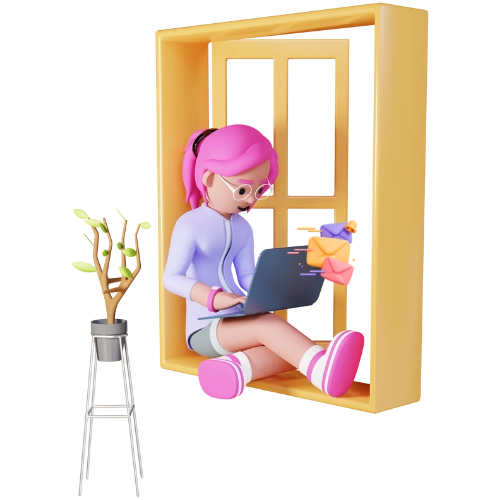

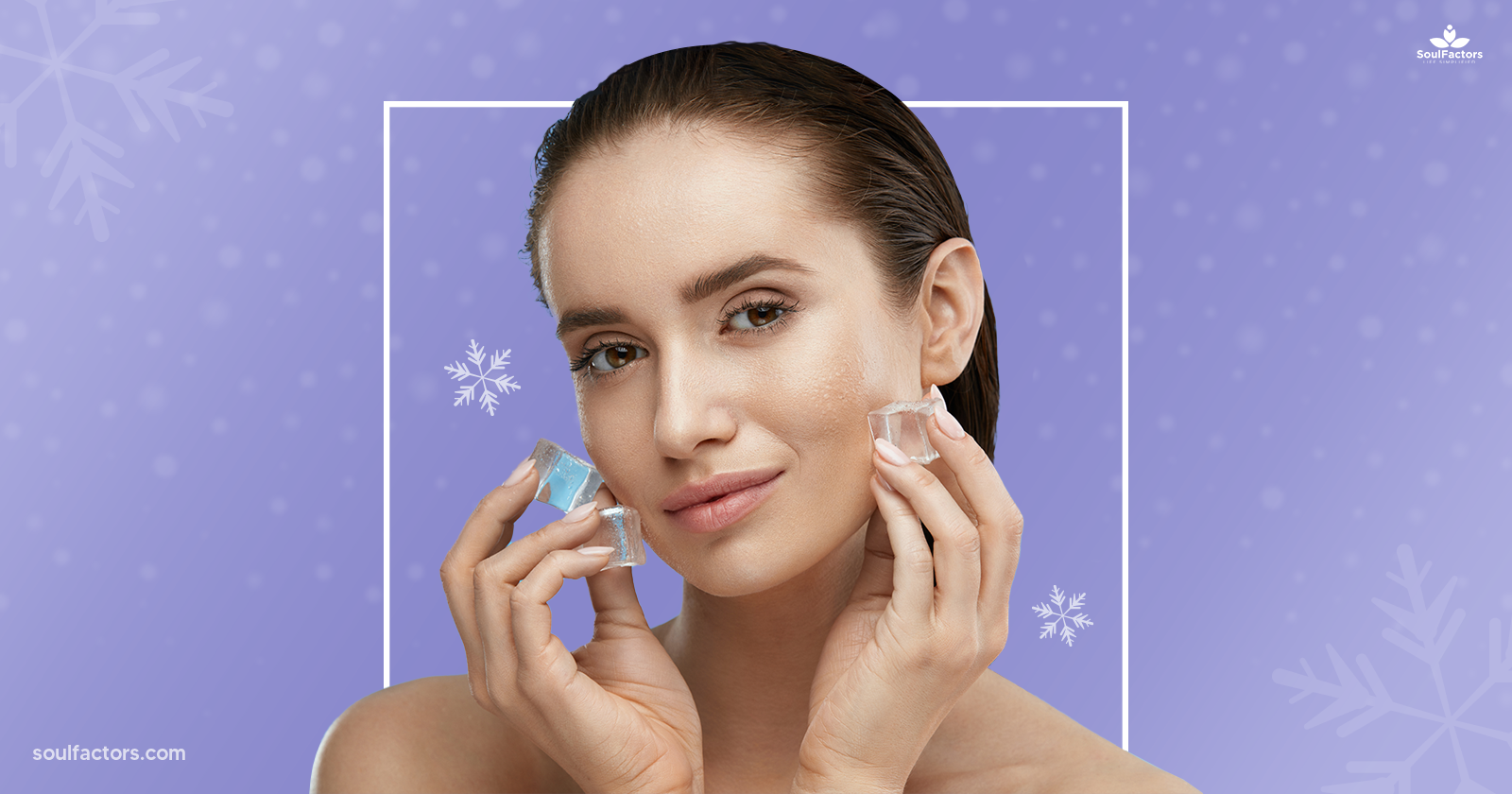
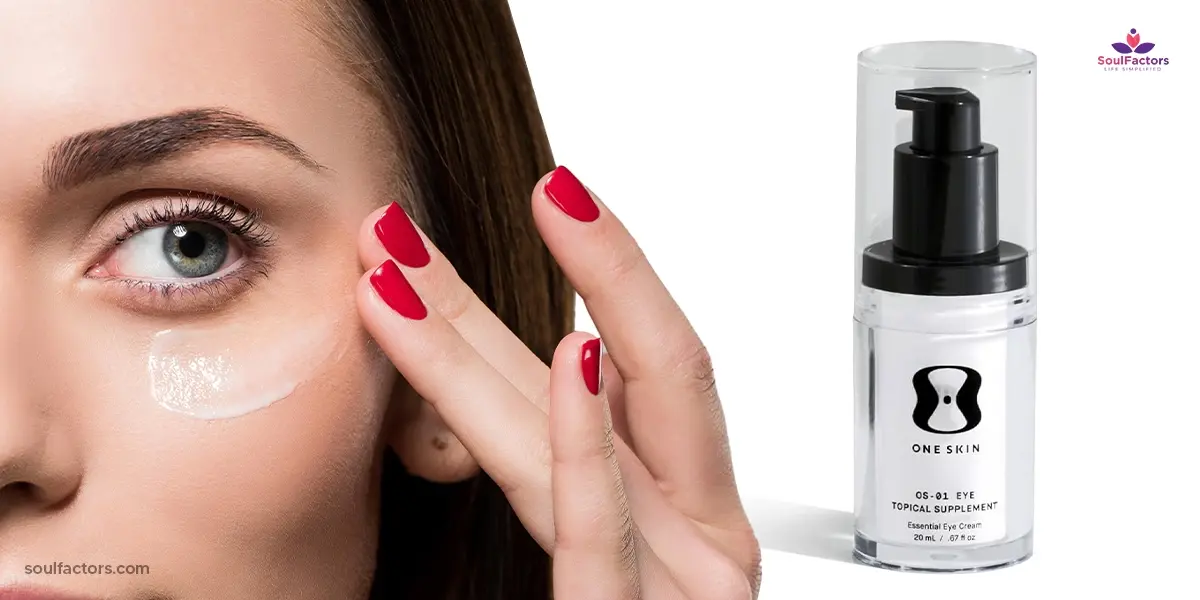
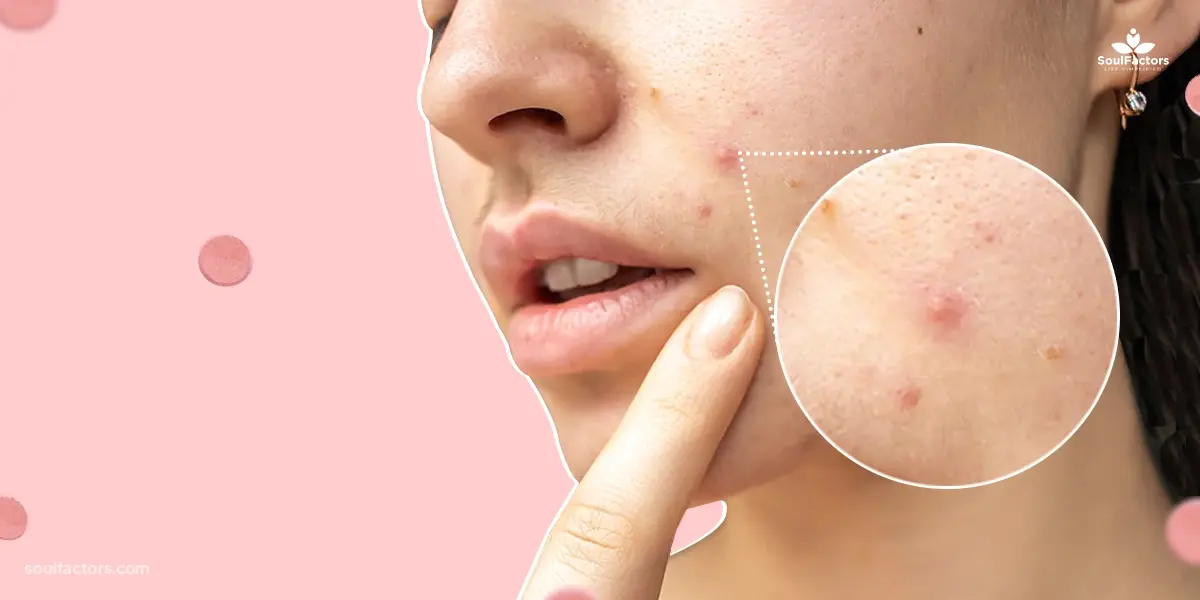
Write a Comment